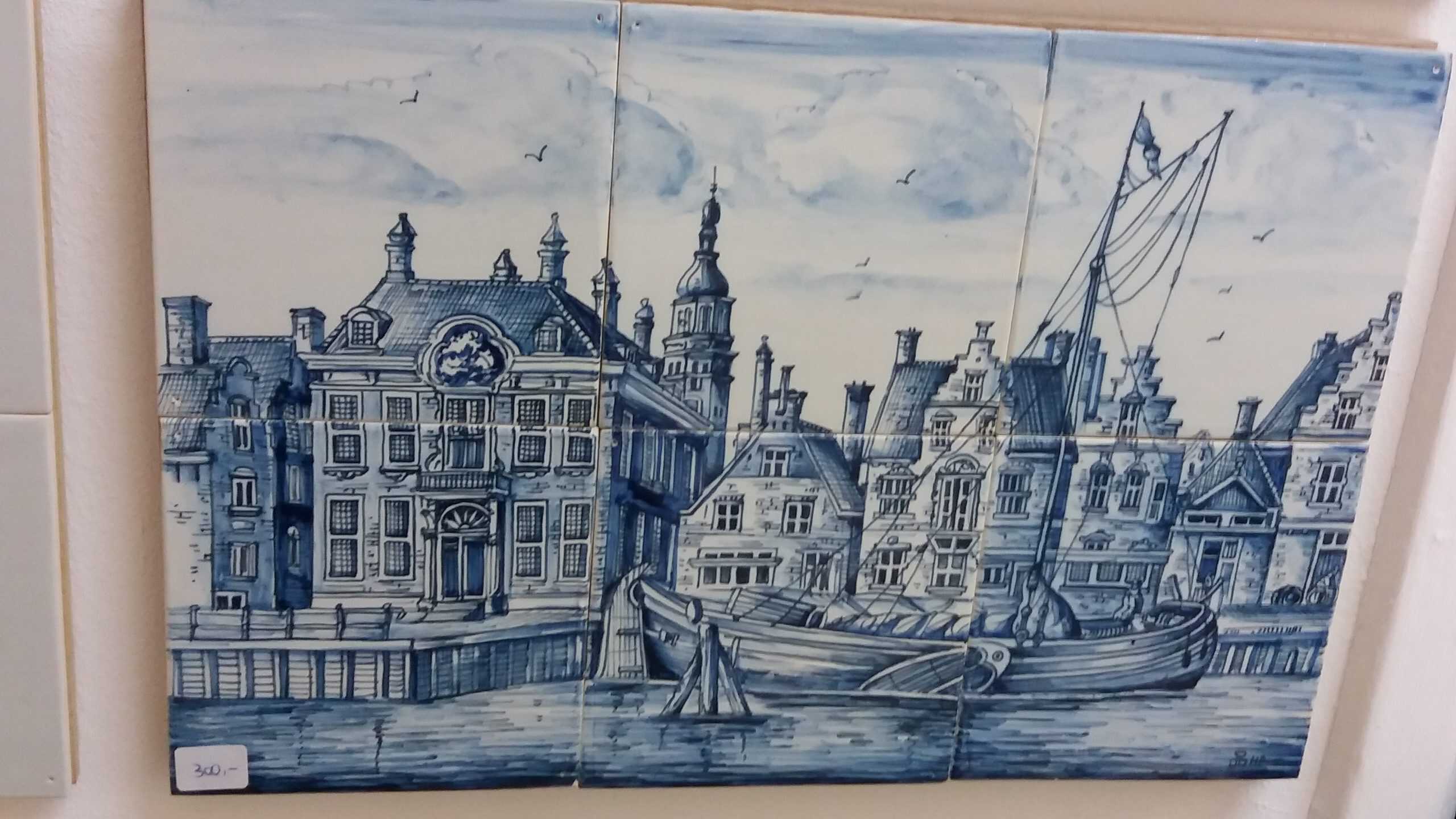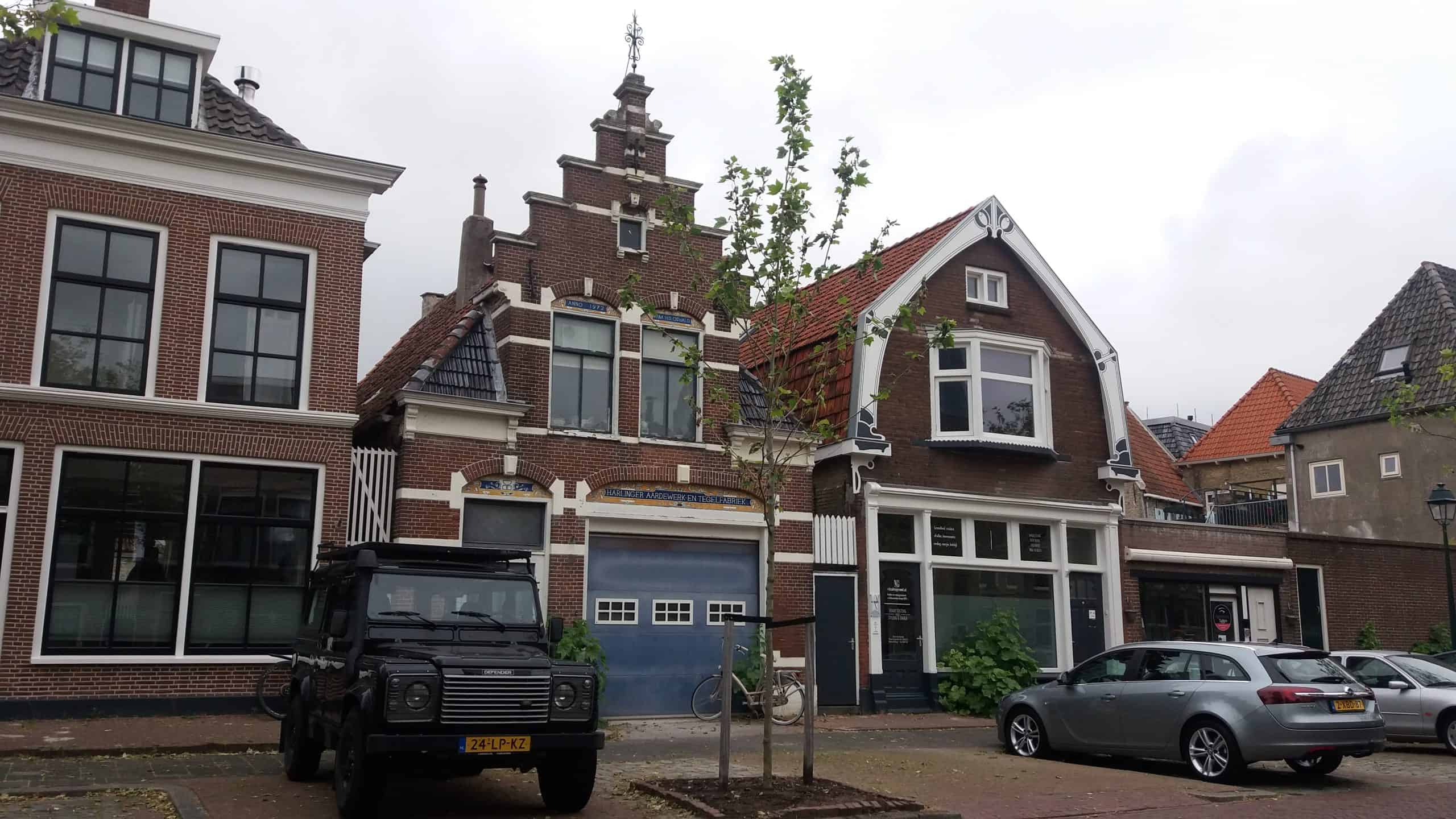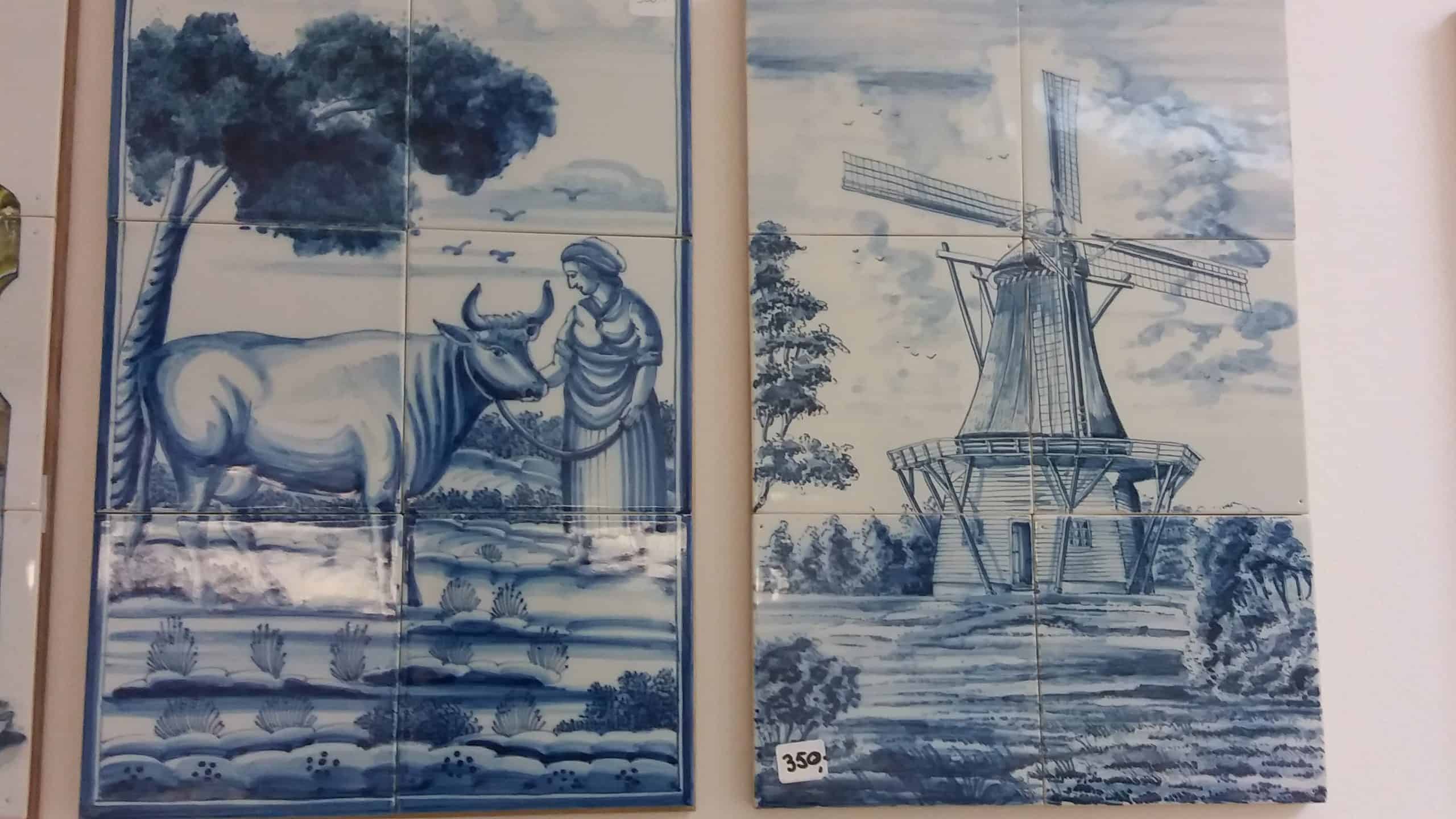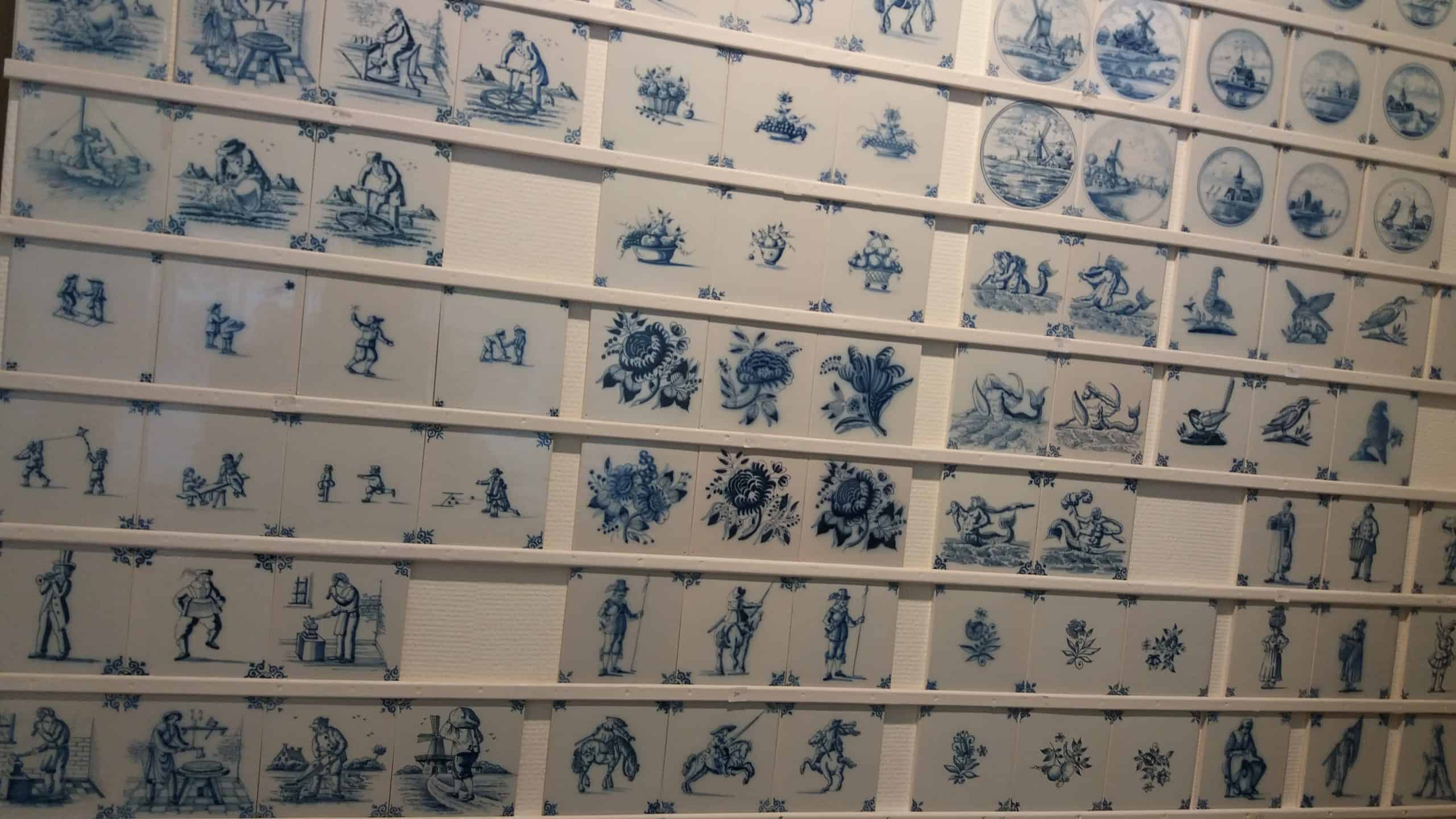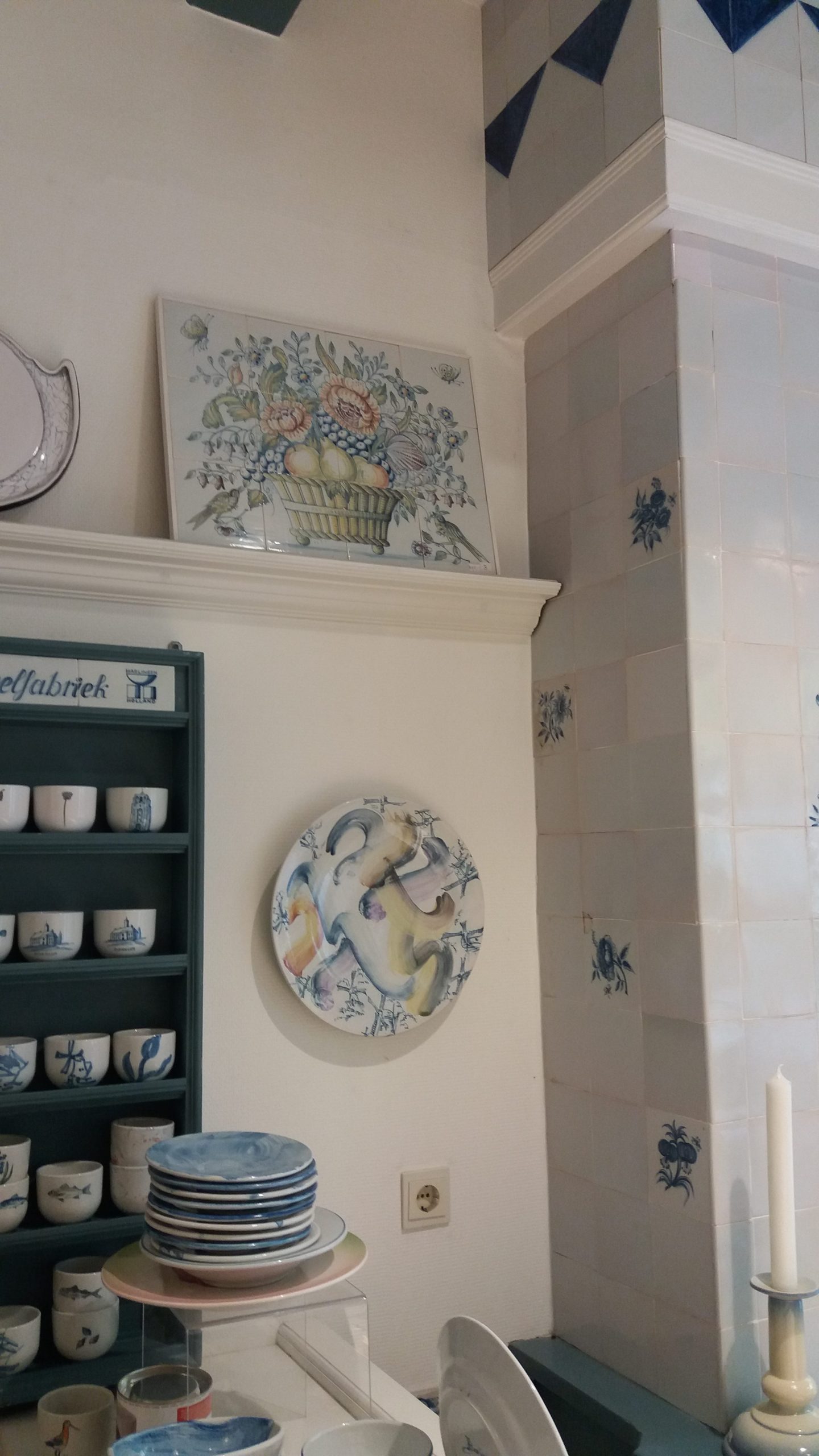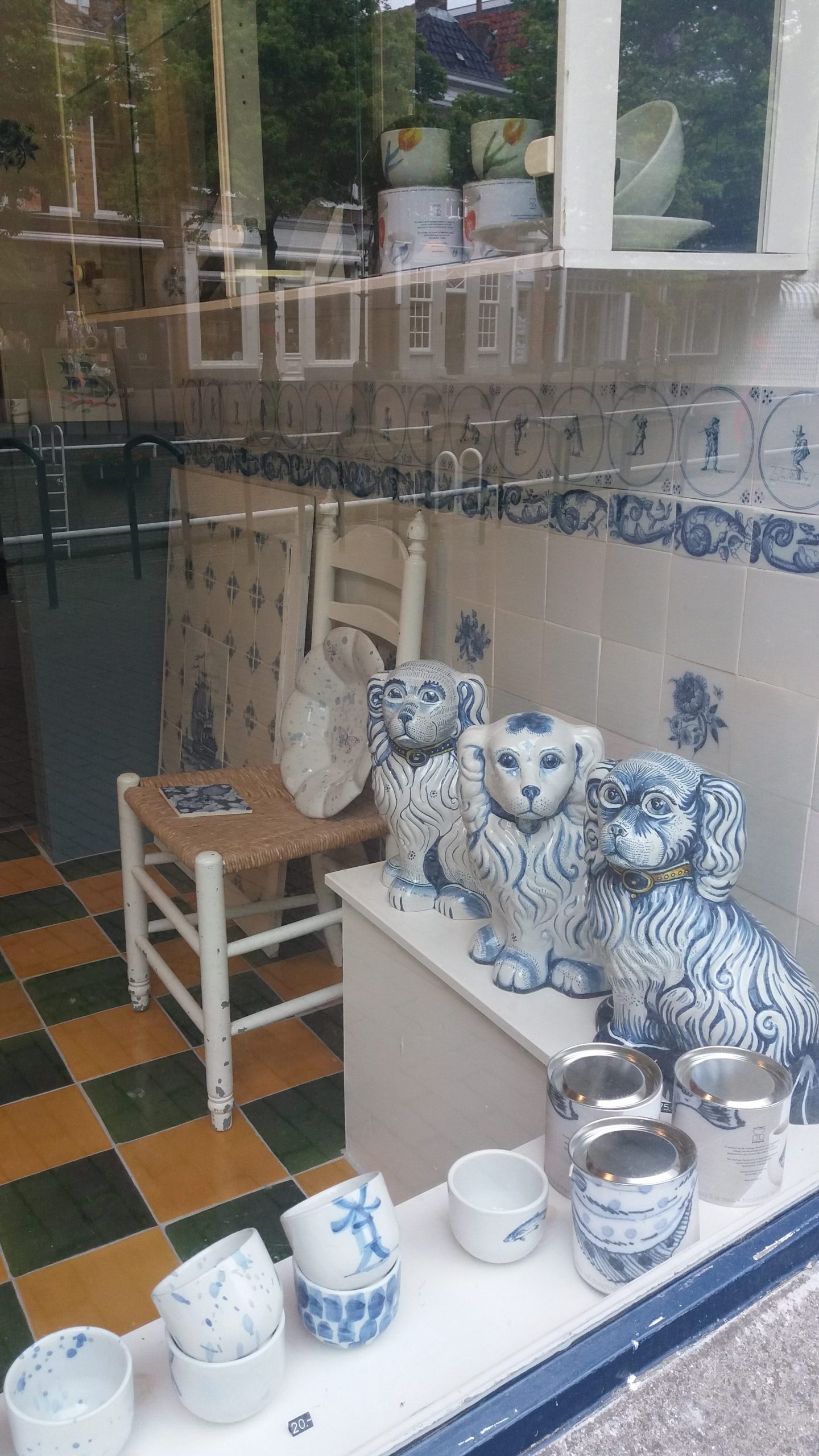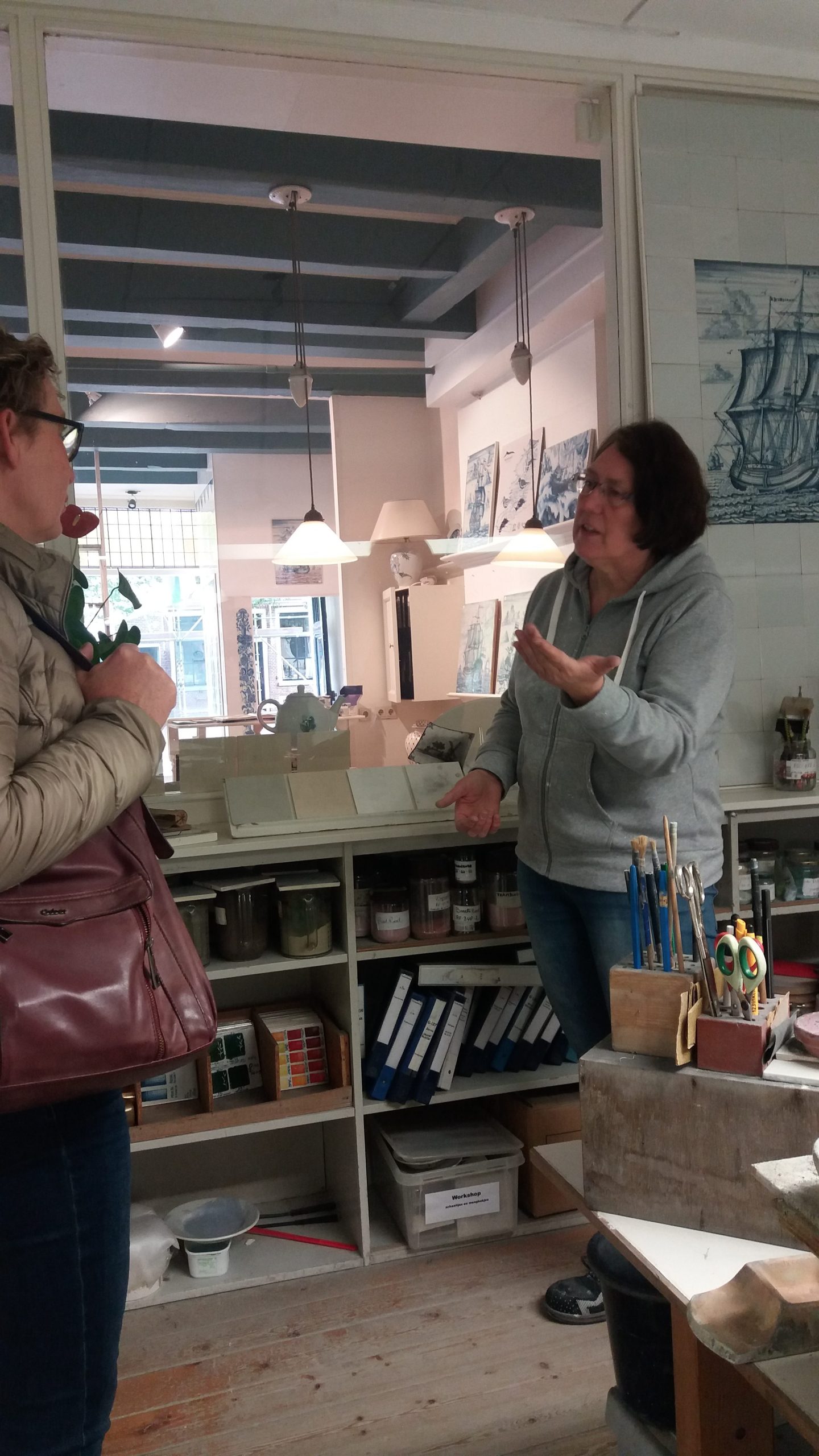My love for Dutch tiles started in my grandmother’s kitchen, which had a frame of them arranged around the stove. I still associate Dutch tiles with the warm hospitality, delicious food and cosy times around my grandmother and grandfather’s kitchen table.
During a first visit to the Netherlands, I visited the ceramics factory in Delft. A lot of their production is done mechanically, such as the blue decorations which are transferred onto the ceramics instead of being hand-painted.
Earlier this year I read about the Harlinger Aardewerk- en Tegelfabriek in the city of Harlingen. After attending a conference in Friesland I visited the city. It was early morning and the shops were still closed. My cellphone’s GPS guided me to the business hub of the city and all of a sudden I found myself in front of the shop. It had already opened for business and a friendly woman invited me in.
I was fascinated by what I saw. Besides breathtakingly beautiful tiles, there were porcelain dogs, crockery, traditional white wall tiles (called witjes) as well as floor tiles, locally known as estrikken and plavuizen.
This traditional type of glazed ceramics is known as faience, majolica or, as we know it, Delftware. It has been manufactured in Harlinger since 1598.
There are several reasons why the modern-day factory is unique. It is currently a family business. The last ceramics factory in Harlingen closed down before the start of the First World War and the industry came to a standstill for almost 40 years. In 1972 the Harlinger Aardewerk- en Tegelfabriek was opened by Henk en Maaike Oswald and the proud tradition was reborn.
They bought an old house and fell in love with the centuries-old tiles and ceramic items they discovered in its cellar. They then studied archive material about the old techniques and recipes, with the ceramics artist Hubert de Haas. These techniques and recipes date from the sixteenth century. With the reopening of the factory, the old techniques of manufacturing the clay, glaze and pigments were revived. Although Maaike initially wanted to limit the panels to the lounge and maybe the kitchen, she eventually gave in to the love of tiles and today their whole house is decorated with tiles!
Everything in the factory, from the mixing of the clay to the painting of the tiles, is done by hand. The products aren’t that different to the products made centuries ago. For this reason the factory is often involved in restoration projects done on historical buildings that were originally decorated with tiles.
The Harlinger Aardewerk- en Tegelfabriek does commisioned projects internationally and in the Netherlands; from restaurants to villas; from Europe to the USA. One of its most ambitious projects was done for Ferring International. The company owns a castle, Chateau Mukhrani, on the German island Föhr which is used for social and wellness initiatives. For this project, the factory had to install a panel of tiles at the indoor swimming pool which measured 25 square metres.
Maaike took me on a guided tour of the factory, where I saw the ovens where the products are baked for a number of days, as well as the tables where the tiles are painted by hand. It is delicate work for which a person needs a minimum of three years’ training. Paint brushes that are made of three hair from a cow’s ear are used for this!
Although the factory still makes the known and loved traditional ceramics, it also creates modern items and designs. They believe innovation is just as important as preserving centuries-old techniques and products.
They are particularly known for their tiles which are manufactured to exactly the same size it had been for centuries, slightly larger than the tiles that are made in Delft. The paint’s blue colour differs slightly from the blue Delft pigments and true experts can easily distinguish between the two products. Another characteristic of Harlingen’s tiles is its cutting holes. After the clay is rolled into the required thickness (very much like cookie dough) a small wooden frame of exactly the right size is pressed onto it. The frame has nails on two opposite corners and its purpose is to attach the frame to the clay while it is being cut. This ensures that all the tiles are cut straight. The two cutting holes are visible on the opposite corners of every tile – a feature of the factory’s products.
My hostess was amused as she told me about a project where they had to make tiles with glaze full of tiny cracks for a client who wanted the new tiles in his home to have an antique look. She then showed me tiles that were more than 300 years old with no visible cracks. Glaze that’s manufactured properly isn’t supposed to crack, therefore cracking is a sign of bad craftsmanship and not an indication of age, she said.
Harlinger’s website, https://harlinger.nl/, shows its wide variety of products, photos of completed projects and fascinating information and videos about the production processes. However, it doesn’t come close to a visit to the factory itself. If you consider yourself a ceramics enthusiast, be sure to add the Harlinger Aardewerk- en Tegelfabriek to your bucket list.



